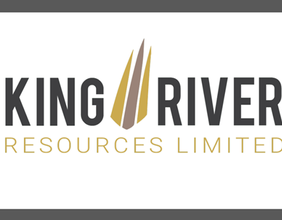Highlights
- A buydown involves a lump sum payment to reduce periodic debt repayments for the borrower.
- It can be made by the borrower or a third party to ease repayment burdens.
- In project financing, it reflects cash flow losses due to sustained underperformance, often sourced from liquidated damages.
A buydown is a financial arrangement where a lump sum payment is made to the creditor by the borrower or a third party to reduce the borrower’s periodic payments. This type of payment structure is often used to ease the financial burden of the borrower, making it more manageable to repay debt over time. A buydown can be particularly useful in situations where a borrower faces cash flow issues or when an external party is involved in helping the borrower meet financial obligations.
Types of Buydowns
- Consumer Debt Buydowns: In the case of consumer loans, a buydown is a payment made to reduce the amount of money the borrower owes on a periodic basis. This can either lower monthly payments or decrease the total loan term. It might be initiated by the borrower or facilitated by a third party such as a family member, a business partner, or even a government program designed to assist borrowers.
- Project Financing Buydowns: In project financing, a buydown refers to a lump sum payment that addresses cash flow losses from underperformance. This payment may come from liquidated damages, typically when a project fails to meet the agreed-upon performance benchmarks. A buydown in this context helps offset the financial losses from the delay or underachievement of a project, allowing the project to continue without jeopardizing its financial structure.
The Role of Buydowns in Managing Debt Repayment
For borrowers struggling with periodic debt obligations, a buydown provides a flexible solution. By reducing the amount owed each period, borrowers are given breathing room to stabilize their finances, particularly in situations of temporary financial hardship. Buydowns can be a helpful tool for managing loans, such as mortgages or car loans, where monthly payments may initially be a significant strain.
The role of a buydown in consumer lending is especially important for individuals facing fluctuating incomes or unexpected financial setbacks. Instead of defaulting on the loan or experiencing severe financial distress, the borrower benefits from a temporary reduction in payments, making it easier to stay current on the debt.
In cases where a third party steps in, such as a business partner or financial institution, the assistance can prevent defaults or foreclosures, preserving relationships and securing the borrower’s financial future.
Project Financing: Buydowns and Underperformance
In the world of project financing, buydowns are an important tool used to mitigate financial challenges that arise from underperforming projects. When a project fails to meet its agreed-upon performance milestones, it can lead to cash flow shortfalls, hindering the project’s progress and profitability. A buydown, in this case, is often funded by liquidated damages, which are payments made by the party responsible for the underperformance. These funds are then used to cover cash flow gaps and keep the project on track.
Liquidated damages typically arise from contract clauses that specify financial penalties for delays or underperformance. In the case of a project, a buydown could be structured as a one-time payment to cover the financial losses caused by the underperformance, ensuring that the project does not experience further delays or financial strain.
The Financial Mechanics of Buydowns
In both consumer and project financing, the fundamental financial mechanics of a buydown are the same: a lump sum is paid to reduce the principal or offset losses. However, the source of the payment and the specific terms can vary.
- Consumer Loans: When applied to consumer loans, a buydown may reduce either the monthly payments or the overall interest costs. This could be a negotiated term or part of a refinancing deal. The lump sum payment might be made upfront or at a set point during the loan's life cycle to provide immediate relief. In some cases, this payment can be spread across the remaining term of the loan, lowering the burden on the borrower.
- Project Financing: In the case of project financing, the lump sum may come from either the borrower or a third party, such as a contractor or investor. These payments aim to balance the project's financial flow by compensating for periods of underperformance or delay. The structure of a buydown in this setting is designed to ensure that the project continues smoothly, without the need for drastic financial restructuring.
Benefits of Buydowns
- Eases Financial Burden: The most immediate benefit of a buydown for borrowers is that it can significantly ease the burden of debt repayment. Whether the debtor is an individual or a company, the ability to reduce periodic payments, even temporarily, can make it easier to stay afloat financially.
- Improves Cash Flow Management: A buydown improves cash flow management by reducing short-term repayment obligations. This allows the borrower or the project to reallocate resources or secure additional financing to weather financial difficulties.
- Preserves Project Viability: In project financing, the buydown is a crucial tool for preserving the long-term viability of a project. By using liquidated damages to offset underperformance, the project can continue without the need for drastic financial adjustments, thus maintaining stability and investor confidence.
Drawbacks and Considerations
Despite the benefits, buydowns are not without their challenges. For borrowers, the primary drawback lies in the source of the lump sum payment. If the payment is coming from a third party, such as a business partner or lender, it could indicate the need for additional financial support or restructuring. In the context of project financing, relying on liquidated damages to fund a buydown can be problematic if the party responsible for the underperformance is unwilling or unable to pay the required amount.
Additionally, while buydowns can provide immediate relief, they may result in higher long-term costs. For example, the borrower might incur additional interest or fees due to the reduced payments, or a project may experience delays in achieving profitability if the buydown is not sufficient to cover all cash flow losses.
Conclusion
A buydown serves as an important financial strategy for borrowers looking to ease their debt repayment burden or mitigate cash flow losses in the context of project financing. Whether it’s reducing periodic payments for consumer loans or addressing financial setbacks in a project, a buydown offers flexibility and short-term relief. However, like all financial tools, it should be carefully considered and employed in the right circumstances to avoid potential long-term financial drawbacks.





_02_05_2025_05_53_40_418159.jpg)
